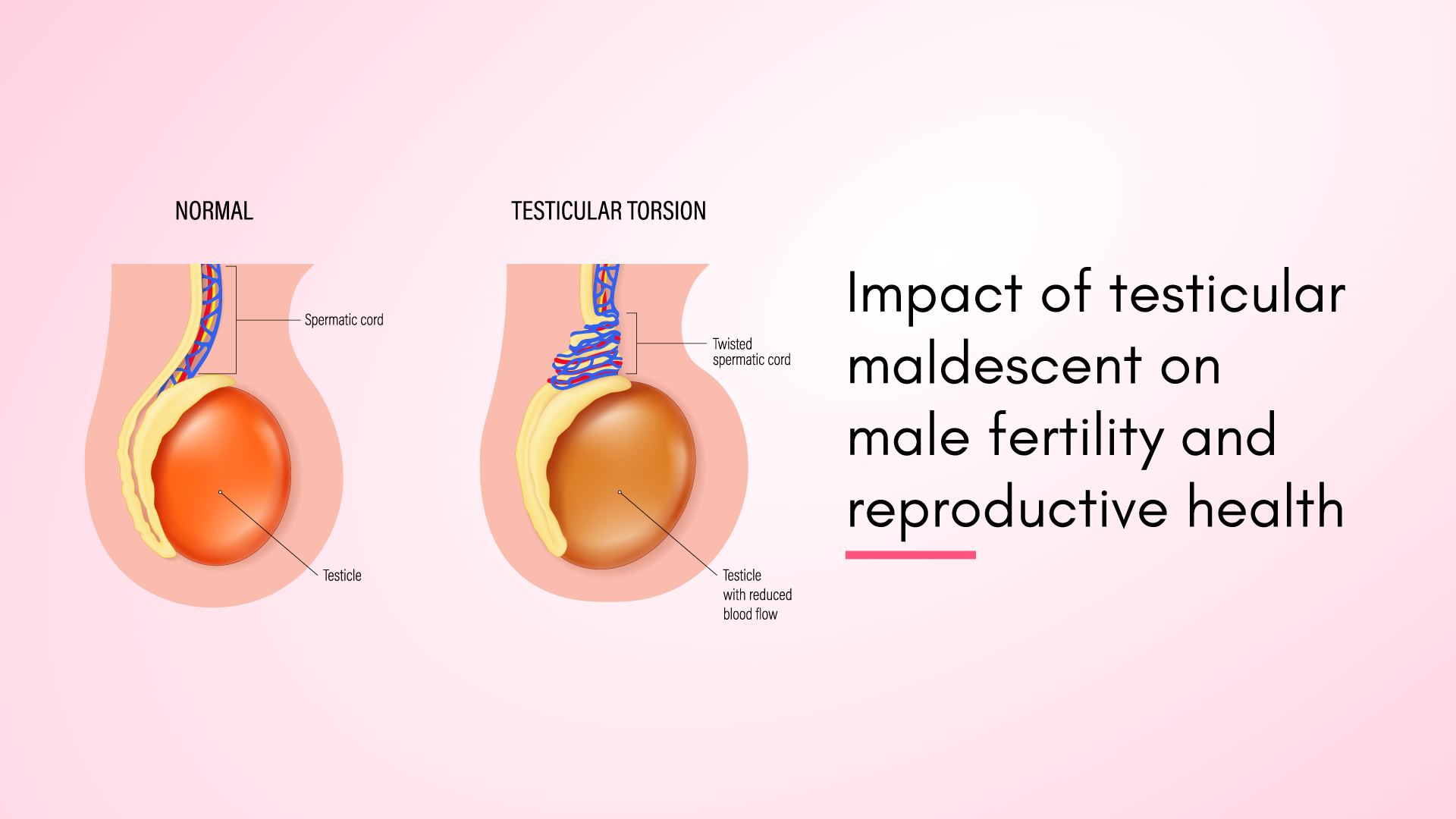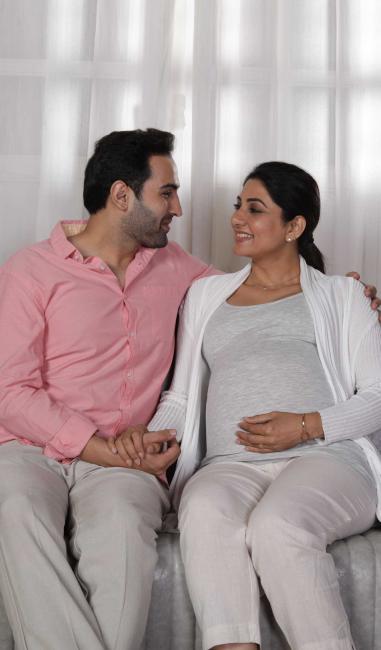Impact of Testicular Maldescent on Male Fertility and Reproductive Health
Reviewed By: Dr. Shashant, fertility specialist at Ferty9 Fertility Center, Secunderabad
Are you concerned about how testicular issues might impact male fertility? Testicular maldescent, an abnormal condition of the testes, can indeed raise concerns about potential fertility challenges. Often diagnosed in infancy, this condition can affect male reproductive health into adulthood. Fortunately, with the proper treatment, many men can overcome these challenges and achieve their reproductive goals. By understanding how this testicular disorder impacts fertility and exploring available solutions, you can address these concerns and find hope for a positive outcome.
What is Testicular Maldescent?
Testicular maldescent, also known as undescended testicles or adult cryptorchidism, occurs when one or both testicles do not move into their proper position in the scrotum by the time of birth. Typically, as the baby grows in the womb, the testicles move from inside the abdomen into the scrotum, a small pouch located below the penis. This is a normal part of development that happens during the later stages of pregnancy.
However, sometimes, this journey is incomplete. If a testicle doesn’t descend into the scrotum by the time of birth, it can lead to various issues. While cases of undescended testicles at age 25 may seem minor, if left untreated, it can lead to significant health issues and affect fertility.
Suggested Read: 5 Common Diagnosis and Treatment Methods for Male Infertility
Factors Influencing Testicular Maldescent
Understanding why testicular maldescence happens can help you grasp the different elements that might influence this condition. Here’s a look at the key factors that can contribute:
Genetic Factors
Studies show that males with a family history of adult undescended testicles have a higher risk of the condition.
Premature Birth
Premature infants often face developmental delays, including incomplete testicle descent. Approximately 30% of boys born prematurely may have undescended testicles.
Maternal Health and Conditions
Conditions like diabetes or hormonal imbalances in the mother can impact fetal development, including testicle descent.
Physical Factors During Pregnancy
Abnormalities such as an unusual uterus shape or excess amniotic fluid may affect testicle positioning.
Congenital Developmental Disorders
Some congenital developmental disorders, i.e., disorders present from birth, can disrupt normal testicle descent.
Hormonal Imbalances
Hormones play a big part in guiding the testicles to their proper place. Imbalances in hormones, whether in the mother or the fetus, can interfere with this process.
Types of Testicular Disorders
When it comes to testicular disorders related to maldescents, there are a few variations you might come across:
Unilateral Maldescent
This is when only one testicle fails to descend into the scrotum. If you have this condition, you’ll find that only one testicle is missing from its usual place, which can still impact your fertility and overall testicular health.
Bilateral Maldescent
In this situation, both testicles remain undescended. This can be more concerning, as it affects both sides and may lead to more significant complications. It’s important to address this male scrotal problem promptly to minimize any long-term effects on fertility.
Retractile Testicles
Sometimes, testicles may move between the scrotum and the groin but can be manually placed in the scrotum. If you have retractile testicles, you might notice them moving up and down.
Ectopic Testicles
This type occurs when the testicles have descended but are positioned in an unusual spot outside the scrotum. If you have ectopic testicles, they are in a place where they shouldn’t be, which could lead to potential health issues.
Each of these cryptorchidism types has its own implications, and understanding them is key to managing your health effectively. If you suspect any issues, consulting a healthcare provider is a crucial step in addressing them properly.
Suggested Read: TESA for Non-Obstructive Azoospermia
How Testicular Maldescent Affects Male Fertility
Testicular maldescence can have several impacts on male fertility:
Reduced Sperm Production and Quality
Testicles outside the scrotum are exposed to higher temperatures, which can reduce sperm production and quality. Research indicates that undescended testicles can lead to a 3-8% decrease in sperm count, leading to male infertility.
Increased Risk of Infertility
The lower sperm quality can make it harder to conceive, raising the risk of infertility.
Hormonal Imbalances
Undescended testicles can disrupt hormone production, further affecting sperm development.
Long-Term Testicular Damage
Persistent higher temperatures can lead to lasting damage to the testicles.
Higher Risk of Testicular Cancer
Men with a history of testicular maldescent face a higher risk of testicular cancer later in life. Estimates suggest that the risk may be 40 times higher compared to men with normally descended testicles.
Genetic and Health Complications
Genetic factors and other health issues can worsen the effects of cryptorchidism and infertility.
Emotional Stress
Dealing with infertility and associated health concerns can also take a toll on mental well-being.
Suggestecd Read: The Power of Laparoscopy and Hysteroscopy
Importance of early detection of Testicular Disorder
Early detection of testicular disorders is crucial for effective treatment and maintaining fertility. Early identification of testicular maldescence can help in timely intervention, thus preventing complications and improving outcomes. Early diagnosis can help preserve reproductive health and ensure better chances of successful treatment, ultimately supporting long-term well-being and fertility.
Diagnosis and Treatment of Testicular Maldescent
Diagnosing testicular maldescent involves:
- Physical Examination: A thorough physical examination done by a healthcare provider can often identify undescended testicles.
- Imaging Studies: Imaging studies like ultrasound may be used to locate the testicles and assess their condition in some cases.
Treatment options may include:
- Surgical Intervention: Surgery, known as orchidopexy, is commonly recommended to reposition the testicle into the scrotum. This procedure is usually performed during infancy or early childhood and is successful in around 90% of cases.
- Hormonal Therapy: Hormonal therapy might be used in some cases to stimulate testicle descent.
- Regular Monitoring: For some individuals, especially if the testicle can be manually positioned into the scrotum, regular monitoring might be sufficient.
Many men who have treated testicular maldescent have successfully overcome their challenges and fulfilled their dreams of becoming parents. Their stories show that with the right care, positive outcomes are within reach for you, too.
Suggested Read: Male Hypogonadism: Symptoms, Causes, and Treatment of Low Testosterone
Conclusion
Testicular abnormalities are more than a childhood concern—they can have lasting effects on male fertility and reproductive health. Recognizing the potential impacts and the need for early detection and treatment is crucial for managing these issues effectively. If you or someone you know is dealing with this condition, don’t wait to seek help. At Ferty9 Fertility Centre, we offer specialized care and advanced treatments to address testicular disorders and support your journey to better reproductive health. Contact us today to consult and take your first step towards a hopeful and healthy future.
Visit Our Centers:
Fertility Center In Hyderabad
Fertility Center in Visakhapatnam
Fertility Center In Vijayawada
Fertility Center in Karimnagar
Fertility Center in Warangal
Fertility Center in Rajahmundry
Fertility Center in Tirupati
Fertility Center in Kurnool

Write your message


